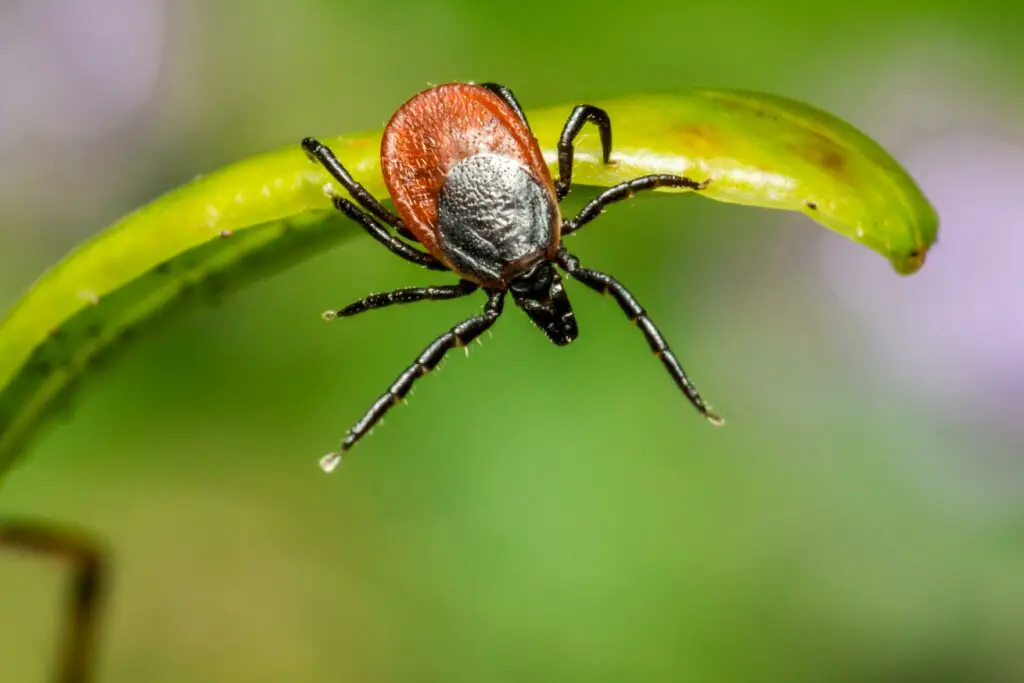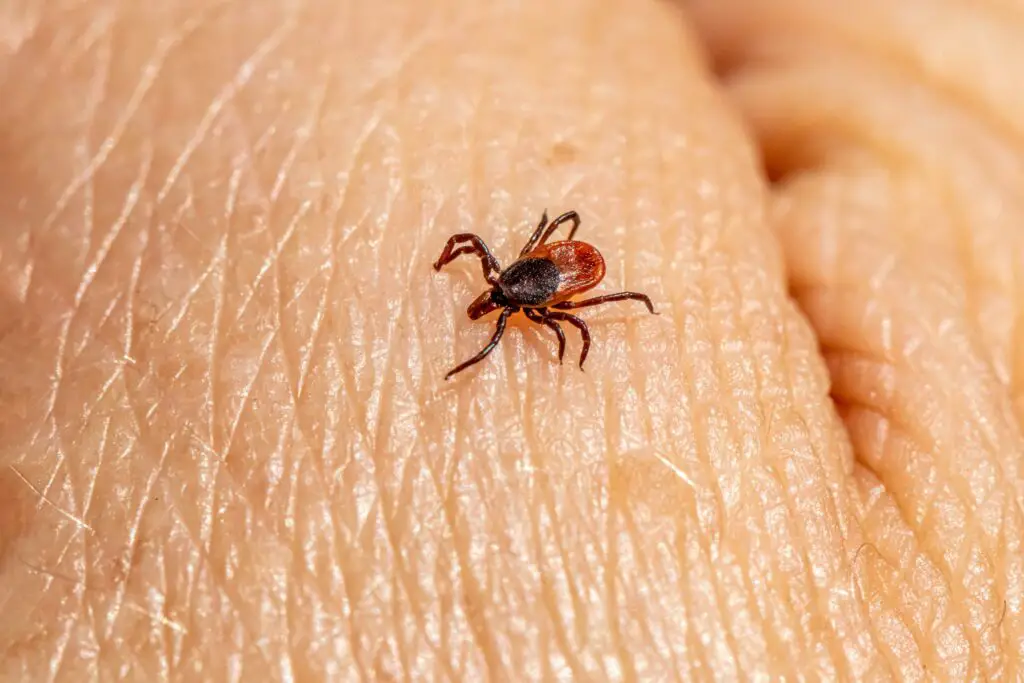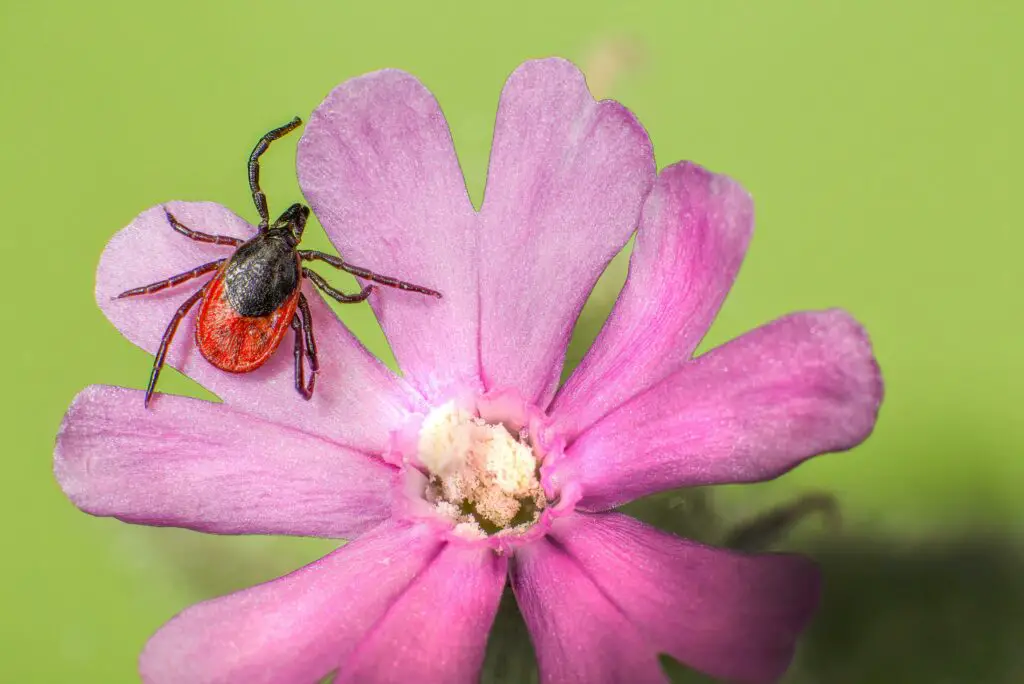Nature is the home to an incredibly versatile array of species, but ticks are definitely one of those that we tend to avoid at all costs.
These tiny arachnids, that are related to spiders, mites, and scorpions, are in fact parasites that survive by attaching themselves to larger animals and feeding on their blood. Humans aren’t spared either. Sadly, these insects carry harmful bacteria that can spread disease to people.
Sadly, tick-borne diseases are at an all-time high, with about 50,000 cases reported each year, and far more going unreported.

There are different types of ticks, and unfortunately, they sometimes find their way to people’s homes. The types most commonly found in homes are the black-legged tick, the dog tick, and the brown dog tick.
- Black-legged Ticks – known as deer ticks, these ticks are typically brown or black in color and have a flattened, oval-shaped body. They are commonly found in wooded areas and can transmit Lyme disease.
- Dog Ticks are larger and can range in color from brown to reddish-brown. They have a tough, shield-shaped body. Dog ticks can transmit diseases such as Rocky Mountain spotted fever.
- Brown Dog Ticks are brown in color and have a slender body.
Although the tick season is between March and October, or sometimes longer, we should be wary of this insects all year round. In fact,if beaten by a tick, a person can develop symptoms even after two or three months.

The bite itself isn’t painful and can cause swelling, itchiness, blistering, and bruising. The bad thing is that ticks also carry and transmit severe diseases, most commonly Lyme disease, as well as Rocky Mountain spotted fever, ehrlichiosis, and babesiosis.
Initially, Lyme disease develops as a circular red ‘bull’s eye’ rash around the site of a tick bite. However, not everyone gets a rash and you should also watch out for a flu-like illness with fever, headache, tiredness and general aches and pains.
The best way to prevent being bitten by a tick is to avoid tall grasses and areas where ticks thrive (such as moorlands and woodlands), especially during the warmer months.
In case you do get bitten, you should remove the tick as soon as possible in order to prevent infections.

These are some of the ways of safe removal.
- Use fine-tipped tweezers: Use clean, fine-tipped tweezers to grasp the tick as close to the skin as possible.
- Pull gently: Apply steady upward pressure, being careful not to squeeze or crush the tick. Aim to remove the tick in one smooth motion without twisting or jerking. Twisting or jerking can cause the tick’s head to break off and stay inside the skin, where it can still transmit disease.
- Clean the area: After removing the tick, clean the affected area with soap and water or an antiseptic solution. Monitor the site of the bite for any signs of infection or a rash, and consult a healthcare professional if necessary.

If by any chance ticks find their way into your home, take immediate action in order to prevent infestation. Most times, ticks are brought into your home in case they stick on your clothes or onto your pets.
- Isolate the area: If you have identified the presence of ticks in a specific area, keep pets and children away from that space.
- Wear protective gear: Put on gloves and a long-sleeved shirt to protect yourself from potential tick bites.
- Clean the area: Clean the area where you found the tick. If it is in bedding, wash the sheets. Inspect the area to ensure there are no more ticks that are present. Dispose of the tick by either flushing it down the toilet or sealing it in a container or ziplock bag before placing it in the trash.
Demi Moore, 61, Ditches Her Criticized Long Hair: Fans React to Her New ‘So Flattering’ Sleek Hairdo
Demi Moore, 61, Ditches Her Criticized Long Hair: Fans React to Her New ‘So Flattering’ Sleek Hairdo
Demi Moore showcased a new slicked-back hairdo that hid her long black hair, and fans appreciated seeing her strands out of her face. The actress’ hairstyle almost looked like a mohawk, with a bit of volume at the top and super sleek sides. She wrapped her hair in a tight bun, perfectly complementing her white gown.

Before even noticing her stunning white gown, fans were mesmerized by the new hair look. One commenter expressed their excitement, writing, “Finally that scraggly hair is gone, if even for a moment.”
Another netizen enjoyed Moore’s elegant look, stating, “Love the details on this. It’s fun and elegant. I know we’re used to seeing Demi with her hair down for events, but up is so flattering here. Bravo! 

Although the sleek bun look needed a bit of getting used to for some viewers, they still loved it. “So strange to see you with your hair tied up after all these looks with the long sleek hair down but still gagging 
Moore’s new hairstyle outshone even the stunning gown she wore. The dress featured a draped neckline with rhinestone details around her shoulders and waist.
She paired the elegant look with silver heels to match the gems and dainty diamond earrings. She also kept her makeup simple to let her hair and dress stand out

The actress’s new slicked-back bun is a trend that has dominated the beauty community over the past decade. This hairstyle has been a top choice among those who favor the “cool girl aesthetic.” It is usually paired with minimal makeup and gives a more polished finish to any look.
Celebrity hairstylist Kathleen Riley praises the style, saying, “To me, it’s a powerful hairstyle. It shows off the face beautifully and is simple yet elegant.”

This hairstyle has become a staple for many people, as it is also universal and works with every hair texture. “It’s quick, easy, requires very little technique, and is a great way to have a low-manipulation protective style,” adds hairstylist Dimitris Giannetos.

However, Demi Moore did not adopt the trendy hairdo until recently, as fans know her for rocking her long black hair. In some instances, internet users have not always loved her hair, especially when styled for red-carpet looks.

For instance, Moore’s recent gown for the Cannes Film Festival was criticized for its unusual design and how her hair was styled with it. This was the actress’ first appearance at the prestigious event in 27 years. She attended “The Substance” premiere in a gorgeous silver mermaid gown.
The gown had an arrowed segment popping straight out on her left side and was styled with silver and diamond earrings and a necklace. The statement dress also featured a neckline that showed a bit of her cleavage.
Demi Moore posed on the red carpet with a smile on her face, showcasing her famous cheekbones. The actress’s photos in this outfit were shared online stirring a heated discussion, primarily centered around her bold fashion choices.

Some comments focused on the gown’s unusual design, including the exaggerated appendage that many fans found puzzling. One critic quipped, “She’s good but what in gods name is that appendage shooting out of her dress.”
Another user wondered why Moore went for that dress remarking, “Demi can poke an eye out with that dress!” Furthermore, an unimpressed fan mocked the dress, noting that its unique design seemed to be saying, “The exit is that way 
In addition to her striking gown, Moore’s long hair also drew significant attention, with some fans saying that her hairstyle was too extravagant for her age.
“Her hair is too much,” one person noted, while another concurred, “Yes agreed… 
Another person loved Moore’s look but was also against her hairstyle, saying, “Demi Moore is like Halle Berry in that they both look beautiful and more youthful with short hair, in my opinion her hair is wayyy too long it does not suit her at all 

Still, the reaction to Moore’s appearance wasn’t solely negative. Several fans defended her look, expressing admiration for her fearless approach to fashion.
“That’s a movie star!!! 






Leave a Reply